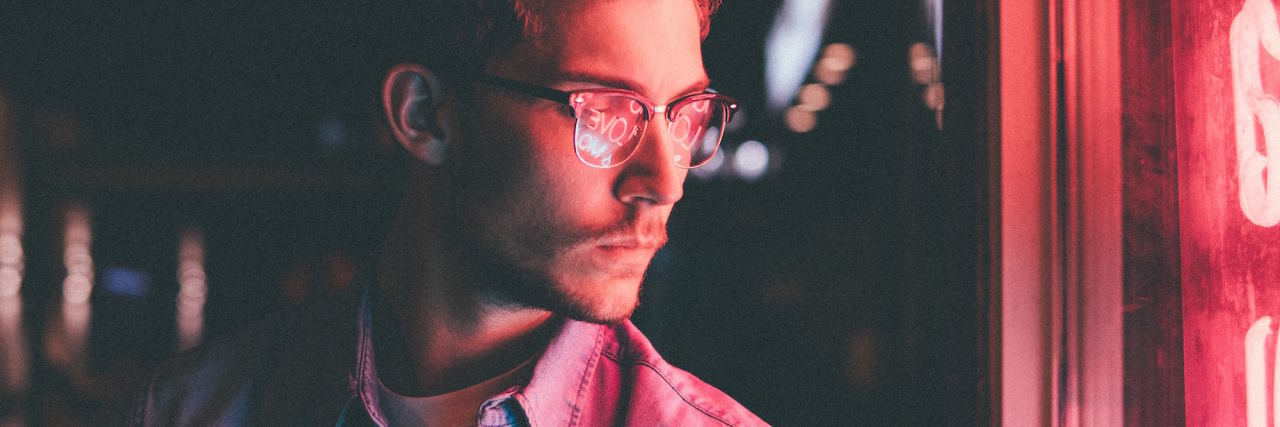The first time I remember being self-conscious about my body was when I was 8 years old. My mother had bought me a new pair of corduroy pants for school, and I dreaded wearing them because, in my little boy eyes, they made my legs look “fat.” (Little did I realize I was actually a fitted pant early adopter!) But even then, it felt somehow wrong for me as a boy to be thinking about my weight in this way, so I dutifully kept quiet.
My insecurity persisted throughout the rest of childhood and adolescence, finally peaking in my early 20s after I moved across the country to attend school. I never spoke about it, but over the course of two years I expressed a painful internal struggle non-verbally with ever-increasing cycles of starvation and exercise, then binge eating and depression. By the time I was 23, I had physically inscribed my suffering across my body through a full-blown eating disorder.
During this period, and as a young man, I found it relatively easy to hide my disordered eating. Many people around me associated eating disorders with young women, and even more narrowly, only had a passing knowledge of anorexia and bulimia. My obsessive exercising, heavily regimented diet and monthly “cheat weekends” didn’t immediately register as symptoms of a deeper issue. I found this especially true of other men in my life, who were not generally open to discussing either their emotional lives or mine.
Finally, when I was 24, I was able to admit to myself that I was using these behaviors to manage intense anxiety, emptiness and anger. I found and checked into an intensive outpatient program, which entailed three days a week of individual and group therapy, as well as activities relating to mindfulness and compassionate self-care. It was at this time I was diagnosed with non-purging bulimia, a condition in which severe caloric restriction and/or exercise compensates for periodic bingeing.
Although I gleaned many helpful tools from my time in the program, I still faced challenges as the only man in my cohort of eight. There were no men on the staff, and much of the literature for the participants was implicitly written for women. I still vividly remember my first group therapy session when one of the other patients voiced her discomfort with my presence. For her, having a man be privy to her treatment process complicated the idea of the program as a safe space. It was difficult to hear her truth, but I respected and admired her for sharing it.
Years on, I have met and forged strong friendships with other people in ED recovery — men and women — and have a much fuller understanding of how my eating disorder fits into my personal journey from simply coping toward achieving wholeness. I also appreciate the important role gender plays in treating conditions surrounding body image. Going forward, I strive to use my personal experience to illustrate the need to increase psychological research and inquiry into the intersections of gender identity, sexuality, ethnicity and eating disorders, while also advocating for finding the commonalities of people with eating disorders across these identity markers.
Sharing the pain of an eating disorder is a lot to ask of anyone, regardless of the “who” or “what” we use to define ourselves. For me, the real work begins on an individual level with visibility, with telling my own story shamelessly and with seeking ways to create the safety and space for those struggling with an eating disorder to talk openly and honestly.
If you or someone you know is struggling with an eating disorder, you can call the National Eating Disorders Association Helpline at 1-800-931-2237.
We want to hear your story. Become a Mighty contributor here.
Unsplash photo via Chester Wade

